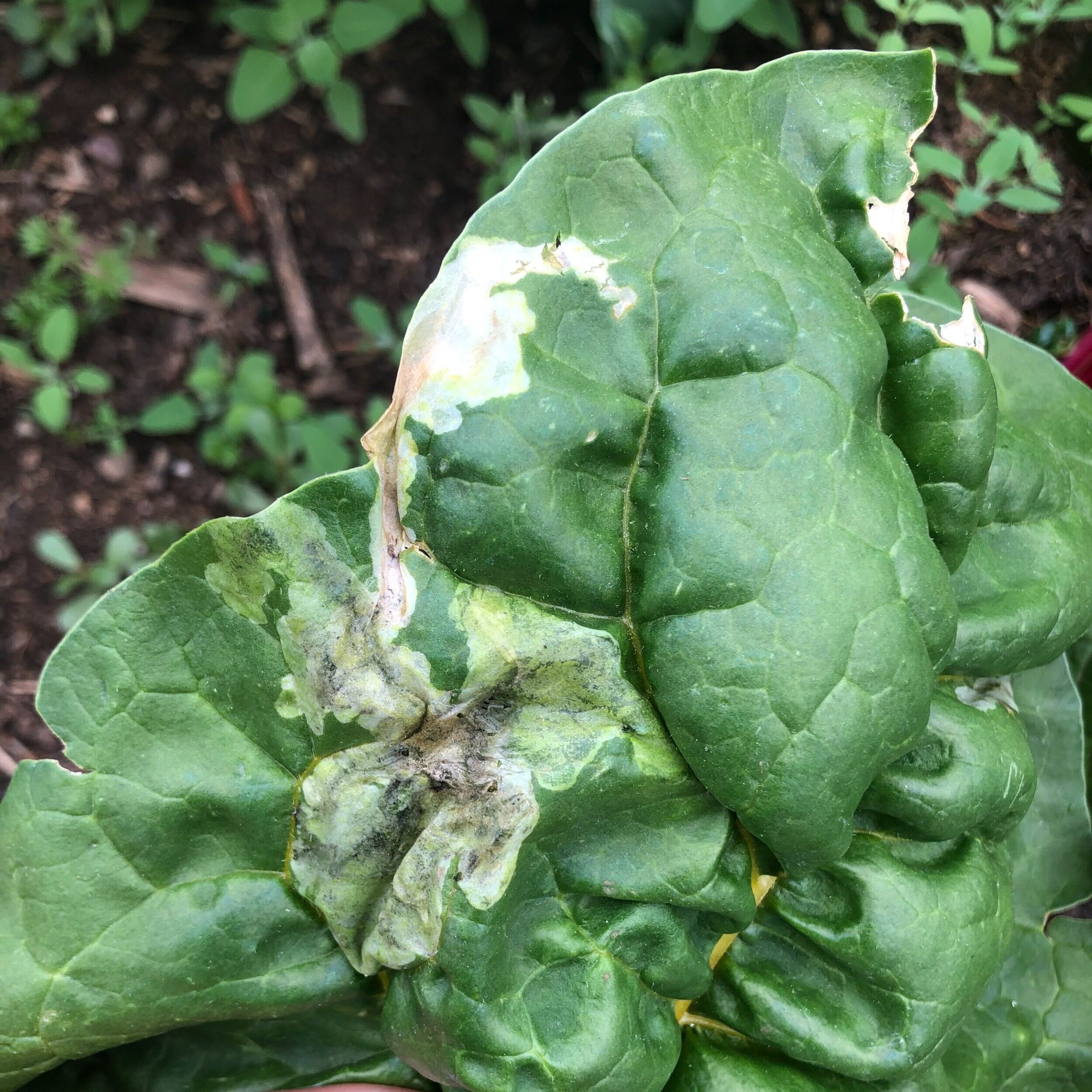Identifying and Managing Leaf Miners


Leaf miners are a common garden pest that you may find living on your spinach, Swiss chard, or beet leaves. Typically, we start to see this damage begin in mid-spring and continue throughout the growing season. Luckily, this pest usually doesn’t kill the plants, but it does make the leaves unsightly and unpalatable. Left unmanaged, you’ll have stunted plants and a diminished harvest.
What is a leaf miner?
Leaf miners are a type of black fly that lays their eggs on the underside of leaves. The flies don’t directly cause the damage; instead, it’s the larvae that tunnel and eats their way through the layers of a leaf. While the fly is difficult to see, the eggs and the damaged leaf are easy to spot.
What does it look like?
The leaf damage can vary from small tunnels to brown or translucent leaf blotches. See the image on the right. The small, elongated white eggs are laid in rows on the underside of the leaf and look like teeny-tiny rice grains. The video at the bottom zooms in to show you the eggs’ characteristics.
How to Manage it
A little leaf miner damage on your beets is usually not a big deal since we eat the root, which the leaf miner leaves untouched. However, for plants that we eat the leaves of, like chard and spinach, the damage is a nuisance and can ruin your crop. (Note: you can still eat the leaves if you cut around the leaf miner part). Unmanaged leaf damage can be so severe that it stunts the plant and diminishes your harvest significantly.
The best thing you can do to manage the leaf miner organically is to remove any damaged leaves and rub off the cluster of eggs with your finger (see video below for a how-to demonstration). Remember to throw the damaged leaves in the trash, not the compost, where the leaf miner can overwinter. Check leaves at least once a week or anytime you’re in your garden to keep up on the leaf miner. Within a couple of weeks, you should see a significant improvement.
Other Tips
Lay floating row cover over your plants right after planting to prevent the fly from laying its eggs if you plan. Also, keep in mind that the leaf miner overwinters in the soil, which is another good reason to rotate your crop locations (read more on crop rotation here). Finally, planting alyssum, dill, fennel, or yarrow nearby will help attract predatory wasps that prey on leaf miner larvae.
As with most organic pest treatments, regular, frequent use and utilizing multiple different methods is best.
Make sure to watch the short video below to see how to identify the eggs and rub them off with your hands.
For more information on other garden pests, check out this blog.
